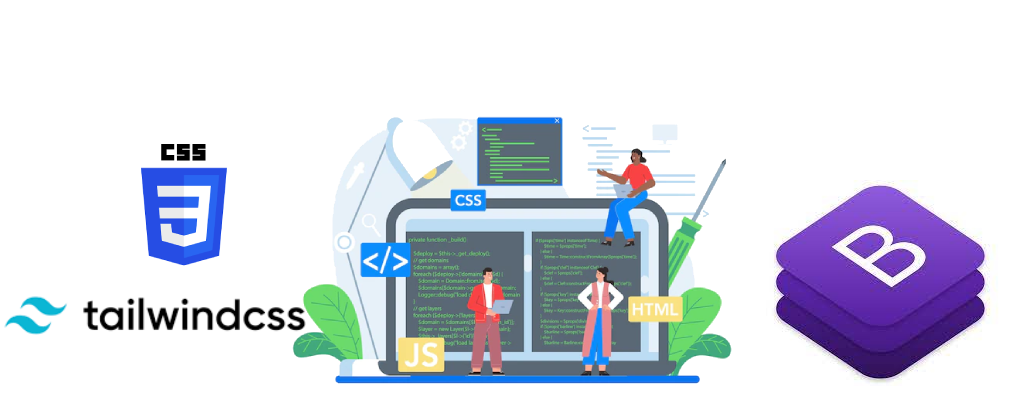Bootstrap and TailwindCSS are two leading front-end framework tools to help create faster, more efficient websites with less coding. Both of these tools, while similar in many ways, have some key differences that can make them better or worse depending on the specific project you are working on or your personal preference for the finished product. In this article, we will discuss the advantages and disadvantages of both Bootstrap and TailwindCSS so that you can decide which one might be best for your project needs.
What is Tailwind CSS
Tailwind CSS is an open-source framework of utility classes that can be used to style any kind of website. It is a well-documented, easily configurable system for creating consistent, responsive layouts that work across many different devices and screen sizes. The framework includes a modern reset and provides easy ways to create fixed or fluid grid layouts. For example, with one line of code, you can set your column widths (how wide each column should be) for the entire site and easily change them later.
What is Bootstrap
Bootstrap is a popular HTML, CSS, and JS framework for developing responsive, mobile-first web applications. It includes templates for common UI components, such as tabs, navigation bars, pagination, and alerts.
It’s maintained by the open-source community on GitHub. Bootstrap 4 is currently in beta and will be released this summer.
How to use them
Bootstrap is an open-source web design framework that offers a wide range of UI elements, typography, and icons. Bootstrap was originally released in August 2011. It is built to be responsive with the help of CSS3 media queries, with a grid system and Sass variables. Bootstrap is built on LESS and it can be customized to suit your needs using Sass as well.
TailwindCSS is also an open-source web design framework that offers a wide range of UI elements, typography, and icons. Tailwind was first released in November 2017. Like Bootstrap, it’s built to be responsive with the help of CSS3 media queries, with a grid system and Sass variables
Difference between them
Bootstrap is an open-source front-end web development framework that provides a design system for developing responsive, mobile-first projects on the web. Bootstrap includes HTML and CSS-based design templates for typography, forms, buttons, navigation, alerts, and many other interface components. Bootstrap also features several JavaScript plugins that are built on jQuery. These include carousel slideshows, drop-down menus, and tabs.
TailwindCSS is a utility-first CSS framework for rapidly building custom user interfaces that prioritize ease of use and elegant code architecture over all else. Tailwind is made with post-compile optimizations in mind to give you the highest performance possible out of the box with no configuration necessary.
Which one is better
Which one is better, Bootstrap or TailwindCSS? There are many pros and cons to using each. Bootstrap is a more established framework with millions of users and plugins. It’s also easier to learn than Tailwind. However, Bootstrap does not have nearly as much documentation as Tailwind which can make it difficult for beginners to get started. On the other hand, when you’re using a framework like Bootstrap you need to learn how to use the framework and all of its features before getting started with design while with Tailwind you just start designing your pages.
Conclusion
If you’re looking for a starter framework that is easy to use and can be customized, Bootstrap might be the right choice. If you’re looking for an advanced, more customizable framework that has a variety of plugins and other features, TailwindCSS may be the way to go. It’s really up to you which one you would rather use when starting your project because they both have their pros and cons.
Are you interested in engaging with us and growing your business to the next level? Contact us now!



